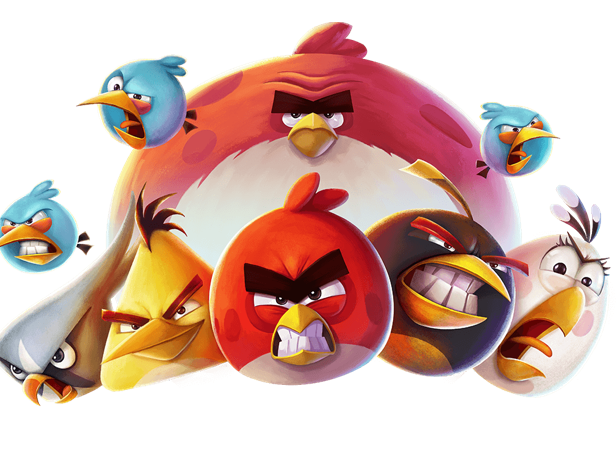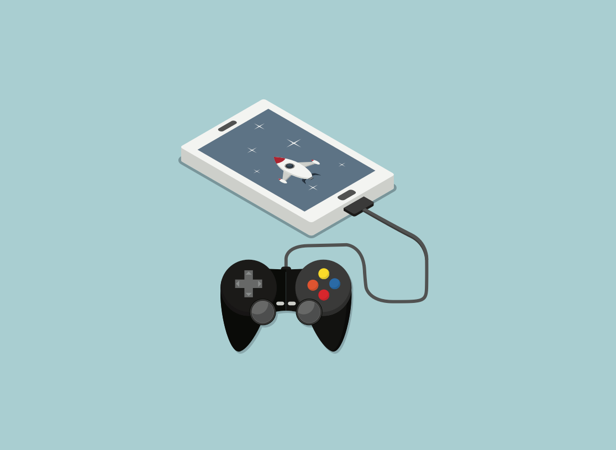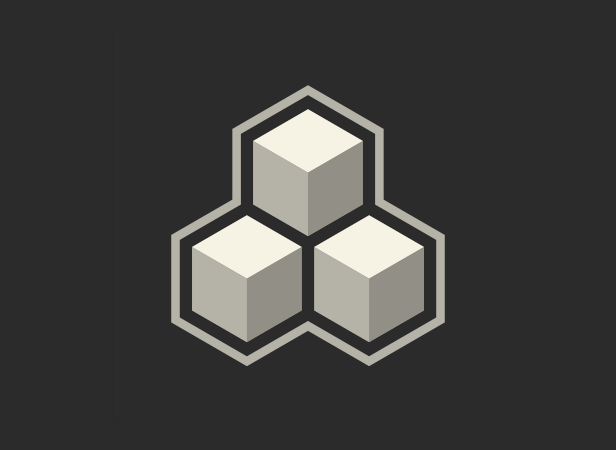Category
Strategies
#Game Deconstructions
Thoughts On Mobile Gaming – An Interview With PocketGamer
Ric Cowley has been working at SteelMedia for nearly 3 years, and has recently been promoted to the role of Editor at PocketGamer.co.uk. We spoke to him about the biggest trends in mobile games, what he enjoys as a consumer, how to get your games noticed by the press, and the overwhelming prevalence of games like Clash Royale. Ric, tell us, how did you get into mobile games? I initially started out at PocketGamer.co.uk as an intern for three months, then I was hired as a freelancer for PocketGamer.biz, and then when a job came up after 2 months of doing that, I was hired as a full-time staff writer, and then have worked my way up from there to the role of Deputy Editor of PocketGamer.biz. Now I’m the Editor of PocketGamer.co.uk! What would you say is one of...
#Ads & Monetization
Microtransactions In Games: The Good, The Bad, And The Ugly
Microtransactions (or MTXs for short) are small purchases players make to unlock further gameplay, gain extra lives, change a character’s appearance, or speed up the gaming process in simulation games like The Tribez. The microtransaction business model has a strong right to exist on mobile; in a world where a Match-3 game costs up to $200,000 to develop and promote, even when they are often distributed for free, game studios are bound to find ways to make money from their hard work somehow. At the moment, over 90% of all mobile games use the freemium model; the apps are free to play (F2P) and incorporate various in-app purchases (IAPs). Although only 1.9% of players actually spend money on in-game content, they bring up to 90% of the total mobile game market revenue, which hit $46.1 billion in 2017. Last year...
#Data & Analytics
Are Casual Games Maturing? Lessons from Angry Birds 2
This article was co-Authored with Michael Katkoff and originally published by Om Tandon here. Casual Games Casual games is a relatively new genre that was arguably kicked off by PopCap when Bejeweled launched on browsers in 2001. The true growth of the genre was enabled by Facebook and driven by Zynga’s FarmVille and other Ville-style games. The third and largely ongoing growth started in 2012, when King took its popular Facebook game Candy Crush Saga to mobile. Today, when we talk about casual games, we tend to mean games with relatively simple gameplay, substantial active user base and somewhat limited monetization potential compared to more advanced games. In short, casual games are generally targeted at people who may not traditionally consider themselves as gamers. Casual games like Angry Birds, Candy Crush Saga, and Temple Run are typically distinguished by simple rules, reduced demand...
#Data & Analytics
How To Determine Your Game’s Player LTV
It’s pretty easy to figure out how much a given player has spent on your game during the course of a set period of time. However, it’s much more complicated to figure out that player’s actual value to your community (and your bottom line). After all, you had to spend a certain amount to get that player to your game to begin with – marketing and promotions aren’t free! That’s where calculating player lifetime value or LTV comes in. The most basic definition of LTV is that player lifetime value equals the amount of revenue earned from an individual player throughout their lifetime – or the profit they will generate for you from their first moment playing your game until the last. We’ve talked about calculating player lifetime value before, and the standard simple equation holds true – the return...
#Marketing & Publishing
Exploring Motivation & Retention for Popular Games
Retention is the most important metric for a free-to-play mobile game’s long-term business outlook. If you want to understand the link between a player’s lifetime value (how much money they ever spend in the game) and how long they continue to play your game, Emily Greer gave a GDC talk in 2013 absolutely packed with web data. This post will expand on that talk by highlighting some game systems in Kongregate’s mobile publishing portfolio that we’ve seen successfully drive long-term player retention. It will also highlight the core motivations created by each game and discuss how that system ties into that motivation. An excellent resource on the subject is Quantic Foundry’s 2017 GDC talk on the anatomy of player motivations. AdVenture Capitalist offers a simple promise that any fan of idle games can appreciate: click more, get more powerful. Quantic Foundry’s talk highlighted idle...
#Game Design
Top 5 Game Engines For Beginners
It’s no secret that creating a stellar game from scratch is no easy feat – it’s comparable to climbing Mt. Everest, in fact. Remember the movie Grandma’s Boy where the main character, Alex, was basically producing his own game with triple-AAA level graphics and gameplay for the Xbox console? And when J.P. was shown a preview of the game, commenting “I like what you did with the bump-mapping”? It doesn’t work that way! Though the movie itself was hilarious, the idea of creating a jaw-dropping 3D game, for a console no less, entirely by yourself in your spare time, is a pipe dream. Sorry for bursting anyone’s bubble, that’s really not my intention – I just want any would-be game developer to fully comprehend the hurdles of game development, especially if you’re going it alone. So for this article, I’ve...
#Marketing & Publishing
Design to Share: How Viral Sharing Works in Blackbox
A note from Ryan: If you’re reading this chances are you’re a part of a larger iOS or design community I’ve been quietly learning from for quite some time. I owe you a great deal and I think it’s my turn to start giving back and sharing more. Here is the first of a few drafts I’ve been holding onto far too long. I added sharing mechanics to Blackbox as an afterthought—but I’ve been designing for sharing since day one. To this day, these design decisions and mechanics keep Blackbox growing and reduce the need for marketing. Below is a breakdown of how sharing in Blackbox works from a mechanical level, as well as some of the design considerations I made along the way. Many of these observations may appear to apply only to games, but I firmly believe they hold merit...
#Ads & Monetization
9 Popular Mobile Game Ad Formats (And How To Use Them)
Editor’s note: We wanted to give you the heads up that our Ads Dashboard is now live! Make the most of your in-game ads by seeing your data in our new dashboard. Improve your ads performance by answering the big questions. Advertising is part of nearly every mobile experience, and whether or not you personally approve of it, it’s becoming standard for most mobile games. After all, it’s a billion-dollar industry. And if you’re going to do it, you should do it well. Ads should be well-placed, high quality, and in just the right amounts in order to make sure your users and your finances are both pleased. Let’s start by going through some general categories of games along with the types of ads commonly used in mobile games, and then we’ll cover the guidelines or thought process that should...
#Marketing & Publishing
How To Grow A Gaming Community (When You Don’t Have Players)
When you get started with social networks, it’s tough. Nobody follows you. Nobody reads you. Nobody knows you! How do other game developers get those thousands of followers? 2 years ago, no one knew me either. I was terrible at communication, and I didn’t like it. Back then, I had failed a company, largely due to a lack of online presence. And today? Not only do I enjoy the exchanges with the community every day: I learned to communicate the hard way and it paid off. With a niche concept in game design education, I’ve got 30,000 YouTube subscribers, gain around 50 more every day, and companies who come to me with job offers. Thanks to them all, I’m fully independent. When it comes to getting visibility, there’s no short answer. No definitive formula to drive the people’s interest. It’s...
#Game Design
Our 9 Sound Design Tips to Improve your Game’s Audio
We barely touched on sound, yet it’s an important part of the game’s experience: It gives cues to the player that will help him to react to the world. For example, you can hint the presence of some NPC behind a wall or inside a building. Or let the player know that an enemy is rushing on him while it’s not visible yet. Sound provides instant feedback to the player’s inputs. We talked about that in the article on juicing, which you can check out right here: Squeezing more juice out of your game design! Music is your most powerful tool to drive emotion. Sound effects greatly contribute to the player’s immersion. The absence of sound, or bad sound design will break your game’s feel. That’s why you want to pay great attention to it. For this article, we collected...
#Ads & Monetization
How to Budget your Mobile Indie Game
It’s hard to estimate the amount of work required to produce a game from start to finish. We know it can be costly. It turns out there’s not a lot of information on the topic out there, thus it’s hard to schedule a project right. That’s why we asked independent studios to share some advice to help you budget your next indie mobile game. Larger companies have dedicated project managers or producers to take care of that. Hence, we’re going to focus on indie studios. How to get a mobile game budget right: the basics In short, there are only so many steps you must tackle to budget your game right: Plan your fixed costs (office rent, supplies, hardware, software licenses, legal support, accounting…) List all the tasks required to ship the finished product Break down the tasks into small,...
#Live Ops
Live Ops Strategies For Free To Play Games
Launching a new game is an undeniably exciting moment. After putting in the hard work, imagination, and effort that goes into a new title, you get to send it out into the world. But really, the work has barely begun, especially if you’re launching a free to play or F2P game that’s monetized based on ad revenue and/or in-game purchases. Once a game is launched, you should be optimizing, adjusting, updating, and reporting your progress throughout your game’s lifespan or existence, working to improve player retention as well as increasing downloads, getting lapsed players to return, and increasing the number and length of player sessions. All these activities and events meant to increase player retention and maximize the value of a game’s user base can be referred to as live ops. [bctt tweet=”What are live game operations and why may...
#Strategies
Getting into Free to Play Games: Lone Stone Studios Interview
There’s nothing like learning from the experience of other developers. That’s why we went ahead and interviewed a young mobile game studio who’s working on their first Free to Play title, City Invaders. We got in touch with Pierrick, the company’s co-founder. He shares his experience getting a mobile game studio started. Following on our recent 2-part article Launching a Mobile Game Business he shared some tips and several decisions the team took to hopefully make both the company and the game a success. Hi there! Could you tell us who you are and what you do at Lone Stone? Hi, I’m Pierrick Bignet, co-founder of Lone Stone studios, a game company that also provides web services. We are a small independent studio, so I’m both the game designer and one of the developers in the team. We all work on several different...











